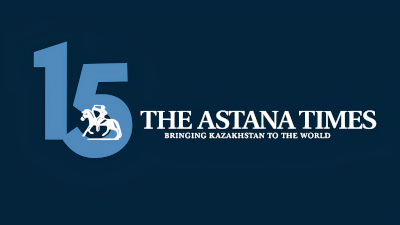ASTANA – Declining oil prices and the U.S. administration’s tariff decisions are key factors behind the recent drop in the tenge exchange rate, according to experts.

Collage is created by The Astana Times/ Fatima Kemelova.
After U.S. President Donald Trump announced new tariffs on imports, global financial markets have experienced increased volatility, fueling fears of a renewed era of protectionism and a potential global recession. The move has introduced a 27% duty on all goods from Kazakhstan.
Although Kazakhstan’s exports are not directly affected by the U.S. tariff measures, the shockwaves were immediate, with secondary effects reaching the Kazakh currency tenge.
The exchange rate of the tenge on the Kazakhstan Stock Exchange (KASE) stood at 519.12 tenge per U.S. dollar on April 7, weakening by 2.7% compared to the previous trading day. Tenge weakened by 2.9% over the week.
According to Kazakh economist Galymzhan Aitkazin, decisions made by the U.S. presidential administration are not the primary driver of tenge volatility.

Kazakh economist Galymzhan Aitkazin. Photo credit: AERC
“Tenge continues to lose positions. But this is rather a natural movement for the currency of a developing country on the background of fundamental shocks. Speculative factors, such as tariffs, play a minor role,” wrote Aitkazin in his Telegram channel.
According to him, the decline in oil prices remains the key and perhaps the most predictable factor putting pressure on the tenge.
“Oil sagged to a three-year low: Brent is trading at $63 per barrel. There is no potential for growth: on April 3, eight OPEC+ countries agreed to increase production by 411,000 barrels per day, and in the United States, Trump is emphasizing the resolution and active stimulation of domestic production. This is additional pressure on quotations,” wrote Aitkazin.
“Until February 2022, the tenge exchange rate almost completely followed Brent quotations: as oil fell, the tenge weakened. After 2022, the ruble exchange rate actively entered the game, reflecting the close economic ties with Russia,” he added.
In an official announcement, the National Bank of Kazakhstan cites a sharp decline in risk appetite, a drop in the value of risky assets, a decline in major U.S. stock indices, and a drop in oil prices as major factors affecting the exchange rate.
“As of April 7, oil prices dropped by 14.1% over the week from March 31 to April 7, falling below $65 per barrel — for the first time in four years. Additional pressure on oil is exerted by the OPEC+ decision to accelerate the removal of previously imposed production limits, as well as Saudi Arabia’s announcement of a $2.3 per barrel price cut for all grades of oil for Asian buyers — the largest reduction since October 2022,” reads the report.
Amid declining oil prices and rising global uncertainty, the currencies of emerging markets and commodity-based economies are showing signs of weakening. From March 31 to April 7, the emerging markets currency index dropped 1.8%, with the South African rand down 7.3%, the Russian ruble 3.8%, the Brazilian real 3.5%, the Indonesian rupiah 1.5%, and the Mexican peso 1.1%.
The surge in demand has also been reflected in increased trading volumes, according to the National Bank. On April 7, the volume of operations on KASE amounted to $456.4 million, nearly double the average daily volume since the beginning of the year.
The National Bank denied any foreign exchange market interventions, stating it “is closely monitoring the situation and, if necessary, stands ready to take appropriate measures to prevent destabilizing exchange rate fluctuations.”


